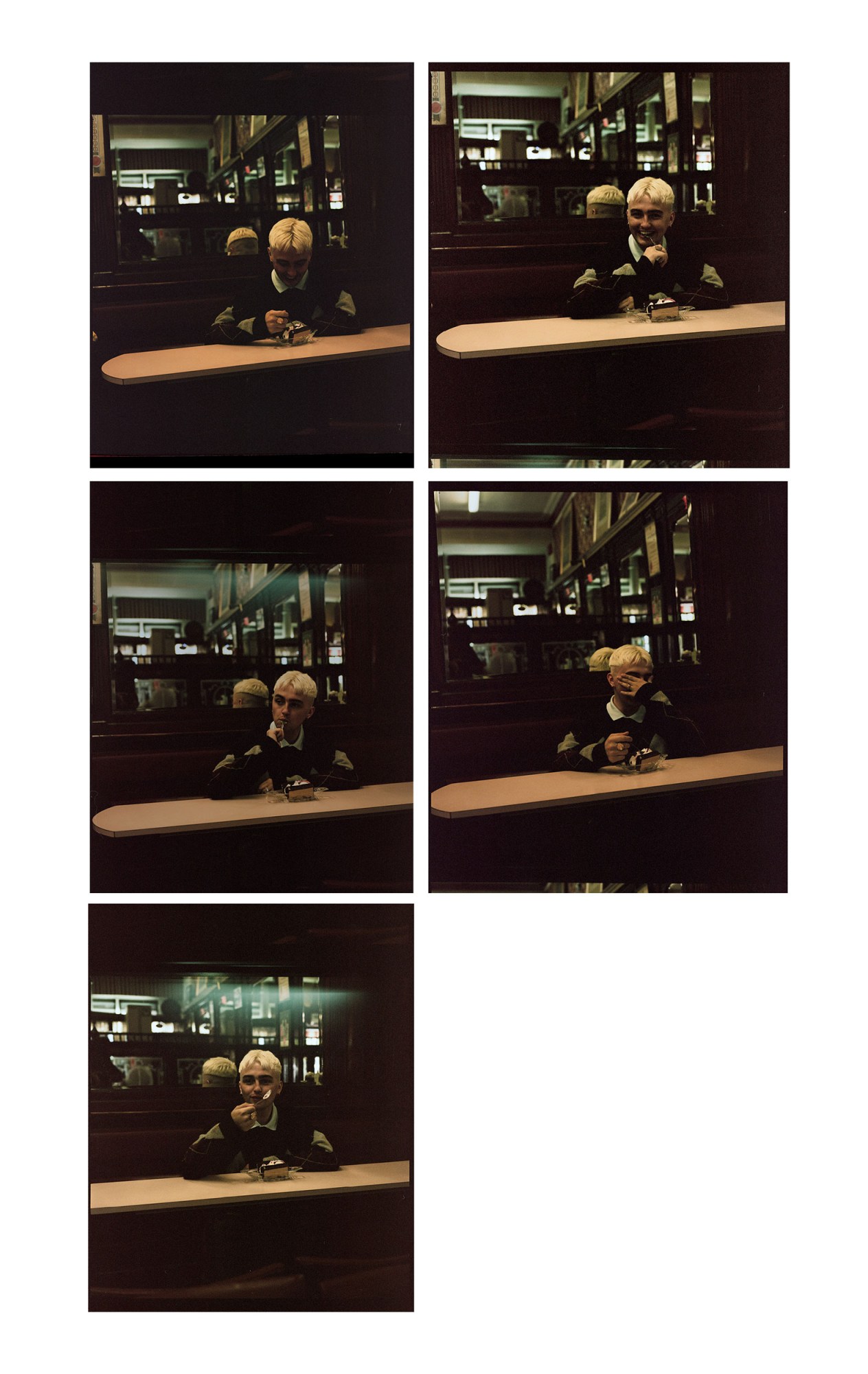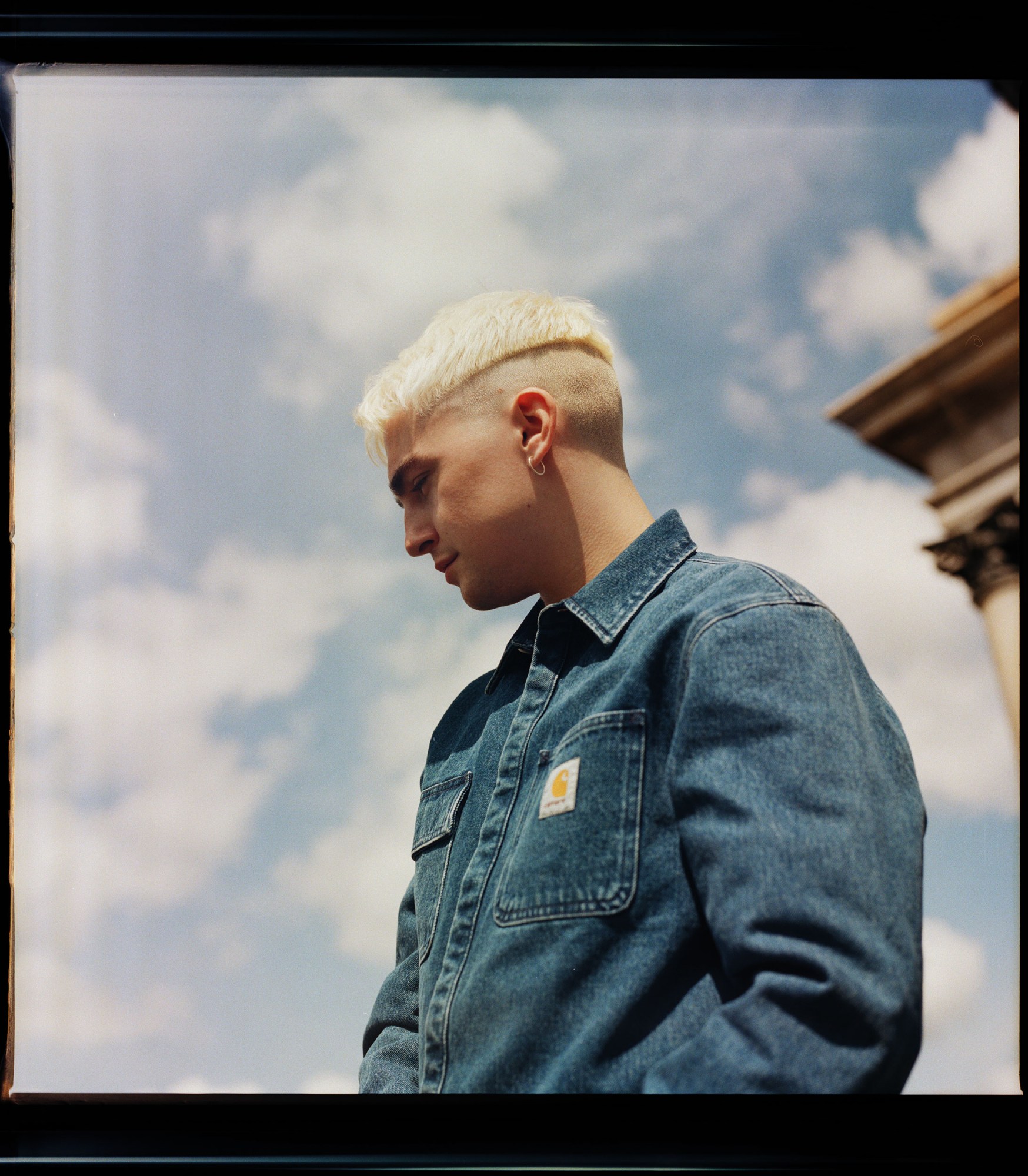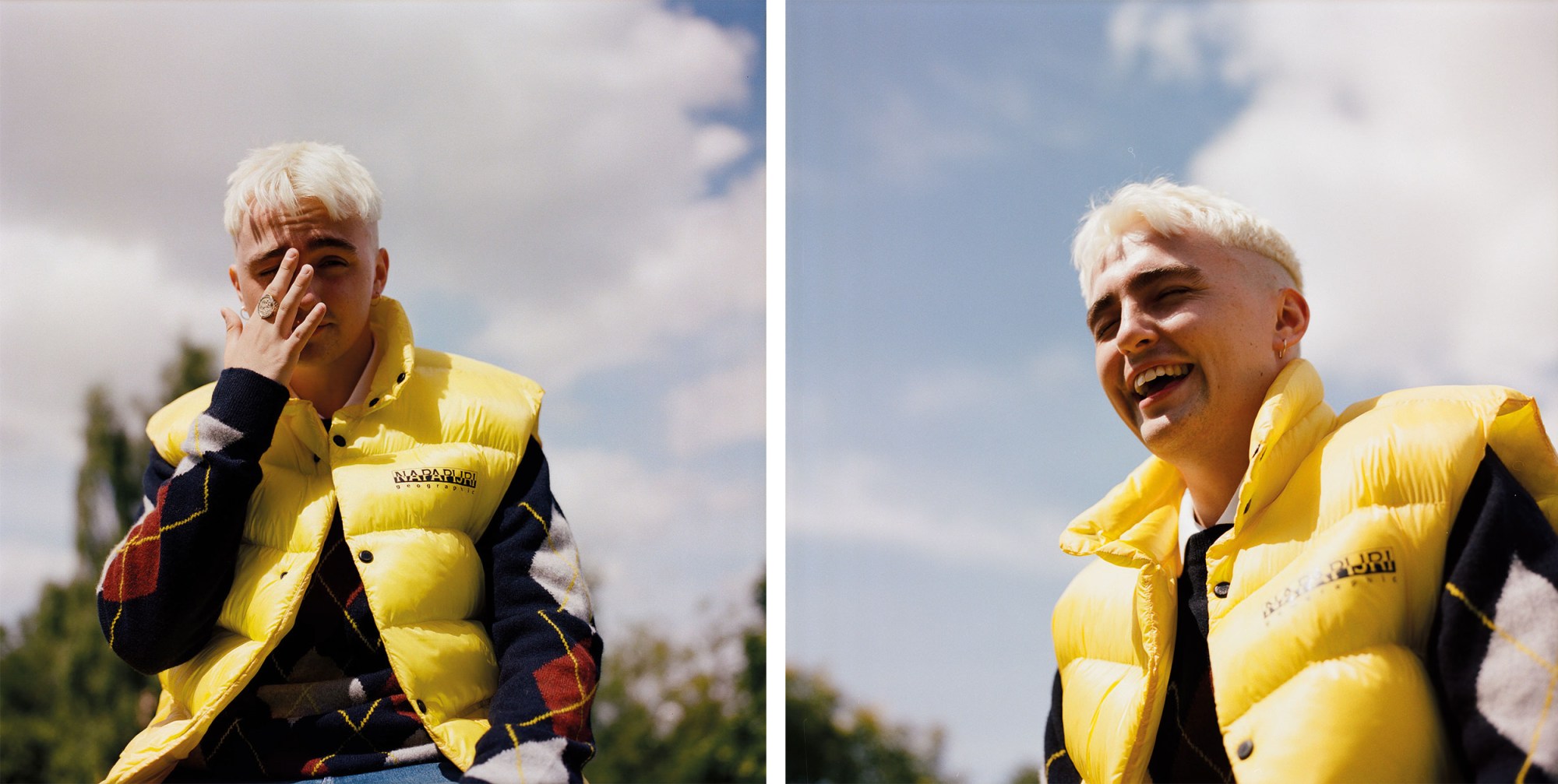This article originally appeared in i-D’s The Earthwise Issue, no. 353, Fall 2018.
Connor McLeod finds it weird to be in front of the camera. The recent Glasgow School of Art Fine Art Graphic Design graduate – Trackie to his friends – is more often found behind it, in the studio, on the sewing machine or at the literal drawing board. His art belongs to the kind of multifaceted, boundaryless space favoured by today’s creative youth.
“My tutor said that I’ve got a very “sporadic brain”, that I want to do a bit of everything. And I was like, ‘Aye, that’s me summed up to a tee!’” he laughs. “You need to keep pushing yourself. You need to keep trying out different mediums.”
Trackie’s degree show – which took in film, photography, screen printing and textile – appropriated the visual language of the mundane to create pieces offering fresh context to a childhood spent in Glasgow. An English football hooligan is juxtaposed with a Renaissance painting. A boy racer’s Audi TT is embroidered on a tapestry alongside the word “shagger” in block capitals. The effect is a cultural rabbit hole of everyday nostalgia: tabloids, street fashion, rave, realism, The Beckhams, lottery tickets and a Mallorcan fry up all rolled into one.

“My work feels most at home in front of the telly in the late 90s or early 00s,” he says. “Princess Diana’s funeral, Rangers scores on Teletext, Happy Mondays’ Bez on Celebrity Big Brother... All these crass reminders of my youth. They help me approach my ideas with a bit of irony or humour.” Not that there’s any arms-length detachment to his work. “Not at all,” Trackie says. “Quite a lot of it is just referencing my childhood. Memories of things that I’ve done or things that I used to watch. Even now I love watching trash telly like Footballers Wives and Bad Girls and all that. It’s like a flashback to a point in my life when I was so into it. Probably when I was still trying to work out who I was as a person too.”
Trackie grew up in an all-female household, about 20 minutes from Glasgow city centre in the district of Whiteinch, just north of the River Clyde. “It was me, my mum and my sister,” he says “Then my sister went to uni when she was 17, so it’s been me and my mum for the last 10-12 years.”

It feels like a bit of a cliché to write that masculinity is “in crisis” in 2018, under threat from some existential force, threatening to tear at the fabric of society and turn men into one large castrated horde. But in areas such as Whiteinch, with its once proud shipbuilding industry, masculinity – or at least the version of masculinity you’re expected to inherit – can feel stifling. “A harking back to some mythical golden age, when men were ‘men,’” as artist Grayson Perry put it in The Descent of Man, his study on masculinity that was itself an influence on Trackie’s work.
“Growing up in a traditionally working class background you had to be a man and fit a certain criteria,” he describes. “When my dad left I was very much the man of the house. My family are quite traditional in that sense. There was an expectation to fit into lad culture or football. I think as a man, until you’re comfortable with who you are, then there is always an element of performance. You try to fit into this ideal of what a male is. Only now am I comfortable enough to look back on those experiences growing up and laugh at them.”

Trackie touches on his own, admittedly limited, football skills in the video Mummy’s Boy, which depicts him on a snow-flecked football pitch, the traditional playground taunt displayed proudly on the back of his Rangers home shirt. “It’s about reclaiming words that used to make me feel demasculinised and putting them in the context of this hyper-masculine world of football,” he explains. “I might no longer inhabit that world, but the idea of ‘fitting in’ to it again allowed me to explore my own perceptions and anxieties.”
While it quickly became clear that Trackie was unlikely to top Scottish footballer Ally McCoist’s goal scoring record, it wasn’t always certain he’d fit into the art world either. “It just wasn’t part of my childhood,” Trackie says. “The art scene and art culture wasn’t something I was brought up with.”
He says he used to draw a lot as a child, but he still fluffed his initial entry exam to study Graphic Design at Glasgow’s prestigious School of Art. “I think not getting in was the determining factor of me really wanting to go there,” he says today. “So I went away for a year and did another course. My mum said if you do this and you don’t get in again, go and do something else because you can’t just fanny around for the rest of time. So I worked really hard for that year and got in. My sister went to uni, but being the second person to go, especially going to go and do something creative, where there isn’t necessarily a job at the end of it, was a big achievement for me and my family.” (“I will try and get a job,” he caveats).

For now, he says there’s “something good happening in Glasgow”. He talks about how a lot of his fellow post-grads are going against the norm, not moving to London but “staying and starting something up here instead.” He wants his work to continue to have some social commentary, “whether it’s on society, whether it’s on pop culture, whether it’s on my own experiences in life. I’d like somebody to look at it and think, ‘Oh, I get that. I’ve felt like that before’.”
And as for his mum? “She’s just really proud, man,” he says with a smile. “I think me and my sister are her biggest achievements, as a single mum. She’s my inspiration. She worked so, so hard all her life just to keep us going and I think graduation day for her was the pinnacle. My photo came through the other day. It’s absolutely atrocious but she thinks it’s stunning so she’s got it up on the mantelpiece, staring at me while I’m watching Bad Girls on TV.”
Credits
Photography Ekua King
Styling Louis Prier Tisdall
